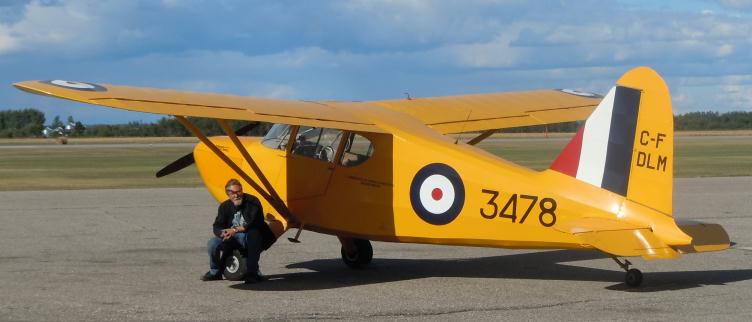
The Model 105 Voyager was first introduced in 1939 as the HW-75. This was an engineering designation that indicated it had a high wing and a 75hp engine. A three-passenger aircraft that featured a strut-braced wing mounted on the top of the fuselage and capable of flying at about 105 miles per hour (169 km/h). The little HW-75 proved an immediate success attracting a flood of orders the manufacturer was hard-pressed to match.
Costing $US2,995 in 1939, the Voyager featured innovations such as slotted wing flaps, and fixed wing slots for better handling at lower speeds.The entire airframe was fabric covered and featured a welded steel-tube fuselage, predominantly wooden wings and tail, and a steerable tailwheel. Surprisingly, the wings incorporated the advanced concepts of slotted flaps and leading edge slots to enhance low speed flight and handling characteristics. An 80 horsepower version, called the HW-80, was also offered.
By August 1939 Stinson had received more than 100 orders and the company’s plant at Wayne, Michigan was rolling out three aircraft each day. James Stewart, air-minded Hollywood movie star, and Howard Hughes were some of the more notable Voyager owners.
Introduced in 1939, Stinson sold 535 Voyagers in 1939 and 1940 before World War II intervened and the Stinson aircraft line was adapted for an important mission. A few prewar Voyagers were commandeered for wartime use and designated the AT-19/L-9 (not the same as the later AT-19 which was a Stinson Reliant).
The 105 Voyager was substantially redesigned to become the U.S. Army's L-5 Sentinel, one of the most used and least recognized U.S. aircraft of the Second World War. Serving as a short field liaison aircraft, the L-5 supported missions such as artillery spotting, medical evacuation, aerial reconnaissance, and passenger transport. Stinson delivered 3,590 between November 1942 and September 1945 under a variety of designations from L-5, L-5B, L-5C, L-5E and L-5G.
The U.S. Navy and Marine Corps received 306 Sentinels from the Army, designating their models as the OY-1 and OY-2, while two versions went to the Royal Air Force as the Sentinel Mk. I and Sentinel Mk. II. After the war, most Sentinels were sold for surplus, but a number of aircraft (now designated the U-19) served in the Korean War. A few remained in active military service until the late 1950s.

Stinson 105
Voyager/L-5 Sentinel

Sponsored By:
